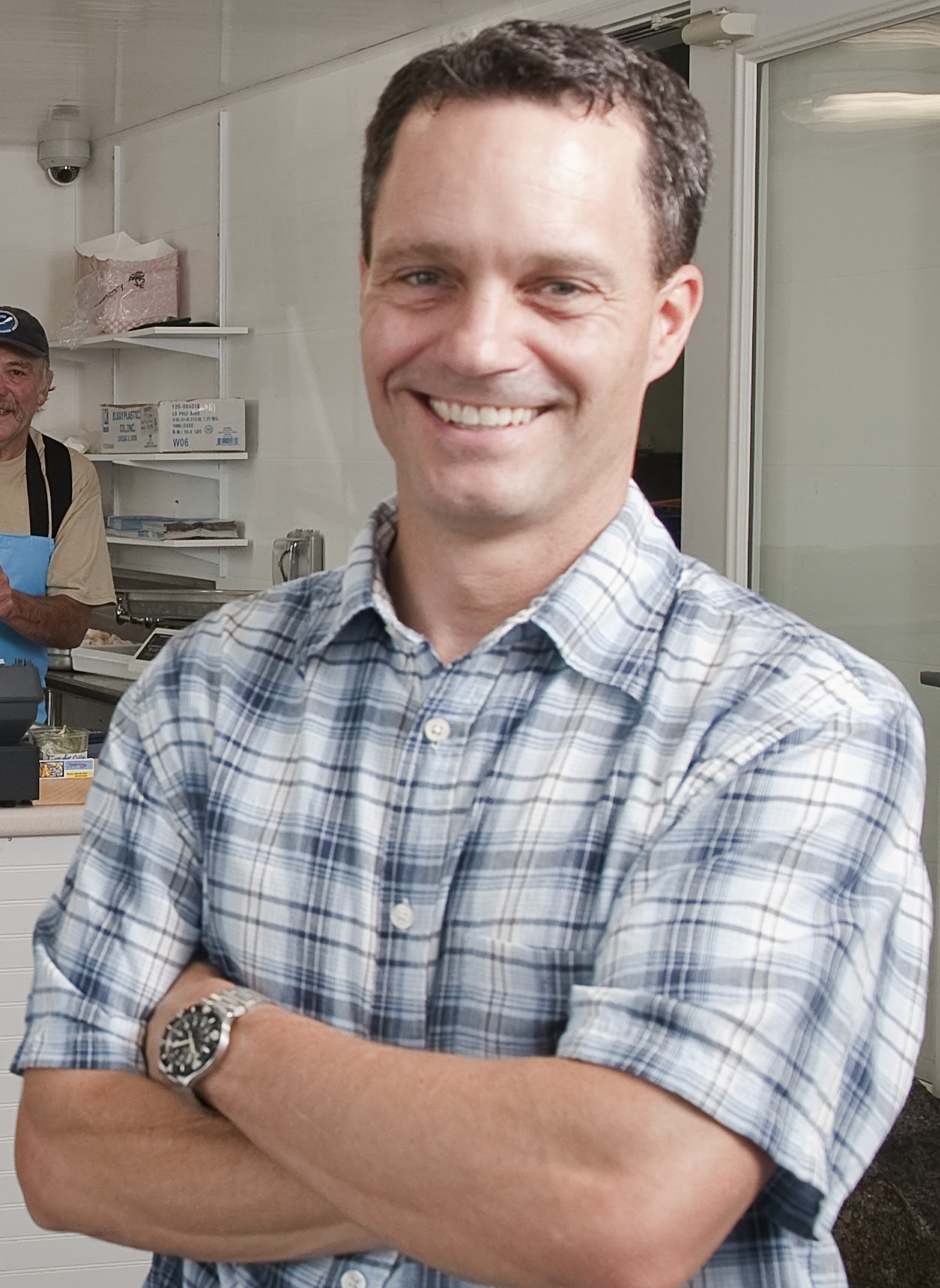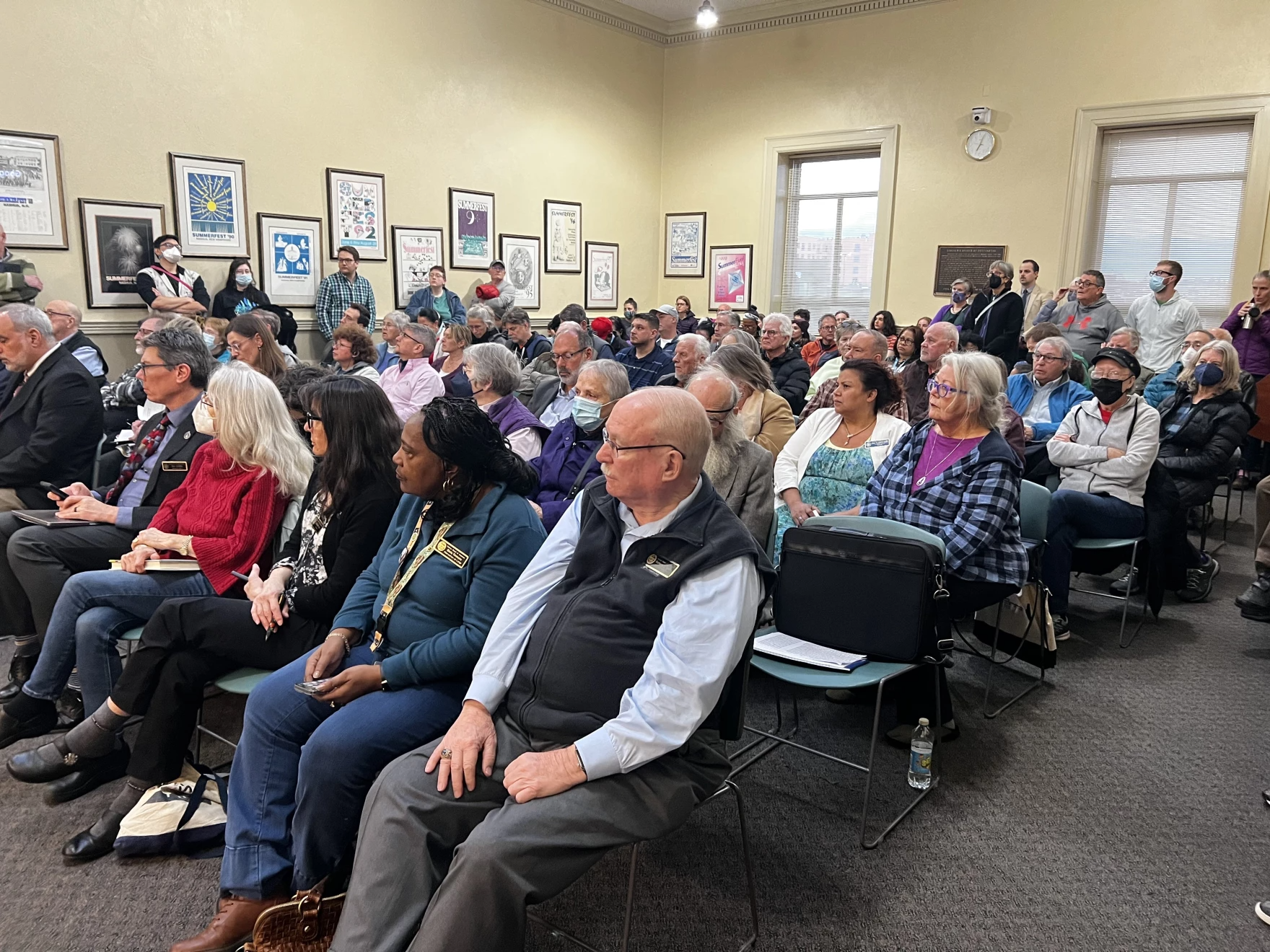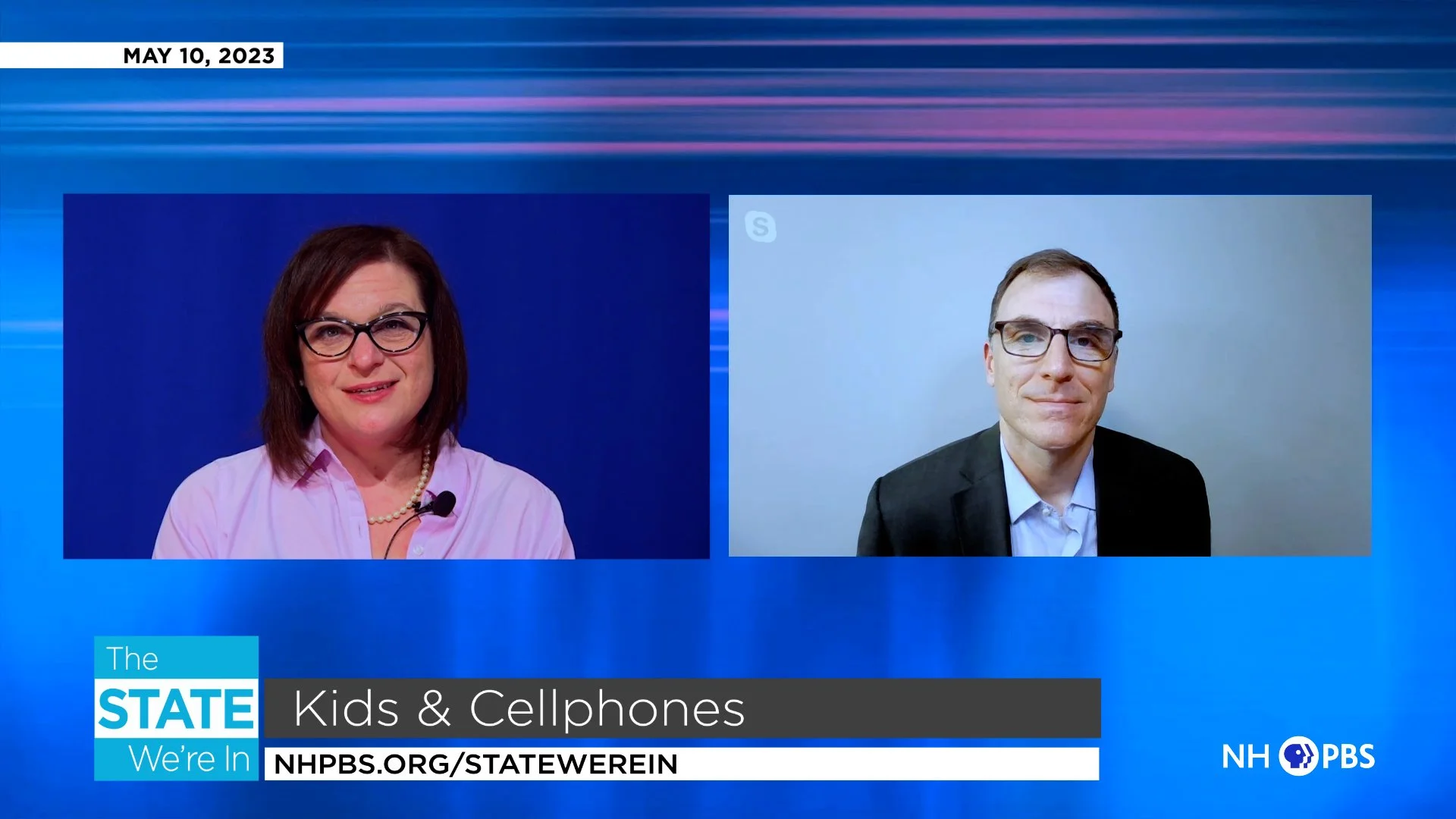UNH Extension spearheads effort to boost broadband and device access, digital literacy
Charlie French of UNH Cooperative Extension says digital equity is not just limited to connectivity. (UNH photo)
By Jordyn Haime
Researchers at University of New Hampshire Cooperative Extension are developing a five-year plan aimed at closing the state’s digital divide by increasing statewide access to internet, digital literacy education, digital devices and training, among other goals.
The Digital Equity Planning Initiative — in partnership with the National Collaborative for Digital Equity and the Digital Equity Resource Center — kicked off Sept. 1 with the help of a $511,216 allocation from the federal Infrastructure Investment and Jobs Act granted through the N.H. Department of Business and Economic Affairs.
Through the 2021 law, New Hampshire received billions of dollars in infrastructure funding, including up to $20 million to implement the Cooperative Extension’s plan, which will likely be broken up into increments of $5 million per year beginning in 2024, said Charlie French, who leads the Extension’s unity and economic development department.
A first draft of the plan will be presented at an open statewide summit, to be held Oct. 19 in Concord.
“Our goal is to have a variety of outlets that give local and regional control on how money gets spent and what the priorities are,” said French. “Some of the money will be distributed statewide, possibly for some existing projects, but a lot of it will be based on a competitive application process.”
The Extension’s Digital Equity Planning Initiative is working to engage constituents and stakeholders across New Hampshire through focus groups, forums and a statewide survey to ensure needs across diverse populations are met.
It hopes to establish nine regional coalitions made up of representatives from covered populations, including aging individuals, immigrants, individuals with disabilities and low-income households.
“Cooperative Extension [is] ready to step in and help ensure that these coalitions have the capacity to play that advisory role. We're going to be doing some leadership development to make sure that the coalitions have a strong membership and a big structure so when the implementation funds come down the pike, they're ready to go,” said French.
Influx of funding
The additional funding toward digital equity comes after an influx of grants and federal allocations aimed at increasing broadband internet throughout the state in the wake of the pandemic, which further exposed the unequal distribution of adequate broadband access around New Hampshire. Forced to work remotely during the early stages of the pandemic, many faced connectivity issues at home and even had to park outside of public buildings or businesses to access the internet.
According to the New Hampshire Broadband Mapping Initiative, about 4.6 percent of New Hampshire remains unserved or underserved as of December 2022.
New Hampshire has received an additional $5 million through the federal Infrastructure Act’s Broadband Equity, Access, and Deployment (BEAD) program to ensure equitable broadband access. In addition, the New Hampshire Electric Cooperative (NHEC) last year received a $50 million competitive federal grant through the American Rescue Plan Act -- also enacted in 2021 – to expand fiber-optic broadband in 73 towns across the state. Seth Wheeler, a spokesperson for NHEC, said the goal is to get all of those towns connected by 2026.
That funding has provided direct assistance to towns like Sandwich, a community spanning nearly 100 square miles with a population density of only about 17 people per mile. In 2019, a group of frustrated residents gathered to push the NHEC to install fiber broadband infrastructure, raising about $1.5 million on its own. After receiving the federal grant in 2020, NHEC was able to provide the remaining millions necessary to finish the job, said Richard Knox, who sits on the Sandwich Broadband Advisory Committee. He estimates that about 50 to 60 percent of residents have signed up for NHEC’s broadband service.
But some residents have still complained that they don’t have internet access or don’t know how to report an outage in their area. Knox hopes the Digital Equity Planning Initiative will help raise awareness statewide so the responsibility to advocate for digital equity in their communities — as well as education and awareness around it — doesn’t fall on individual towns.
“It's a heavy lift for little towns to do this,” Knox said. “We don't have the resources to hire consultants. The town itself can't do these kinds of surveys. So I think this might make a difference in accelerating the whole process … You can’t tackle [the problem] if you don’t know how big it is.”
‘Lack of awareness’
Digital equity is not limited to connectivity — it also means having the knowledge and financial means to access digital tools. Digital literacy is an issue that has arisen most frequently in focus groups so far, said French.
“There's a lack of awareness understanding, or even venues for seniors, for instance, to be able to gain those digital literacy skills, and that can be challenging for someone who is not a digital native,” French said.
In addition, many residents may be unaware that the Federal Communications Commission’s Affordable Connectivity Program provides $30 subsidies to pay for internet service for low- and moderate-income residents. But for certain populations — like immigrants, people with disabilities and English learners — a long federal application is just another barrier.
Affordability and education are factors that Sarah Wheeler, an administrator with New Hampshire’s Bureau of Adult Education, hopes to see addressed by the Digital Equity Planning Initiative.
Adult education programs have continued to lean into remote or hybrid education, but some temporary solutions established to increase accessibility during the pandemic have ebbed. Wheeler says learning programs across New Hampshire have tried to create more permanent solutions by mapping areas with public internet access and expanding laptop loan programs, but that has been a challenge with limited resources.
“[Adult learners] tend to be employed but with low-skill, low-wage jobs and oftentimes two or three jobs. So being able to afford internet access and a device is challenging,” said Wheeler.
Educators across the state have already begun incorporating digital literacy education into the curricula, but professional digital training for all teachers with up-to-date information on cyber safety and artificial intelligence would create more consistency and sustainability across the sector, Wheeler said.
Adult learning programs are also facing new challenges as schools phase out computer labs and IT support staff for Chromebooks (competency and GED tests don’t work on Chromebooks). This has limited programs’ ability to expand testing capacity.
The needs of New Hampshire’s adult education programs may exceed the digital equity grant’s capacity — but Wheeler sees the initiative as an opportunity to gather local providers at one table to share resources, raise awareness, and find other sources of collaboration.
“One of my big concerns with the Digital Equity Act is that they not pump money into things that are not sustainable. Because it is only four years worth of funding,” Wheeler said. “I have some general ideas about what our students need … but this is an opportunity for [local providers] to really expand what they're offering, what they're doing, what they're willing to do.”
Editor’s Note: The Granite State News Collaborative is one of several member organizations sitting on the New Hampshire Digital Equity Planning Initiative’s Asset Advisory Council. These articles are being shared by partners in The Granite State News Collaborative. For more information, visit collaborativenh.org.
If you like what you read here, help us keep it going. Now through 12/31, GSNC is trying to raise $13,000 for local reporting. If we do, we unlock an additional $13,000 in national matching funds. We could use your help. Can we count on you?
-
The New Hampshire Digital Equity Planning Initiative is looking for help from Granite Staters to ensure that the Digital Equity Plan it is creating reflects the state’s diverse connectivity needs and desires. A survey it is conducting can be printed and shared with those who lack internet access. Paper copies can be scanned and emailed to derc@metro.org or postmarked and mailed to:
University of New Hampshire Extension
c/o Michael Polizzotti
59 College Rd.
Taylor Hall
Durham, NH 03824
The Digital Planning Initiative is also presenting two information sessions that are open to all:
• NH Forum on Civic Engagement and Digital Equity | Thursday, October 6, 4-6 p.m. (remote)
• Forum to Review and Strengthen NH’s Plan for Digital Equity: Crafting Our Vision for NH’s Digital Future | Thursday, October 19, 9-11 a.m. (in person)















